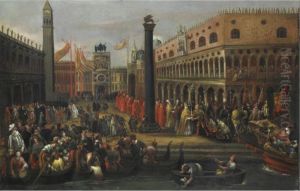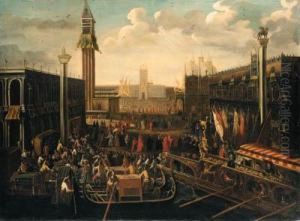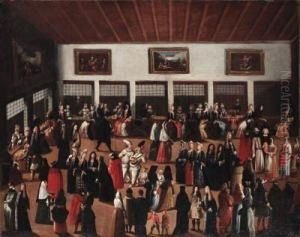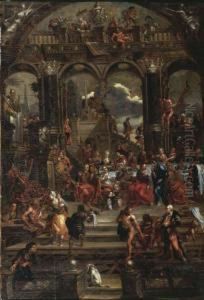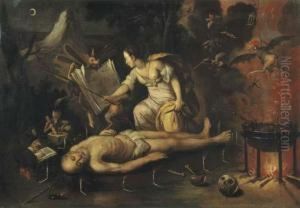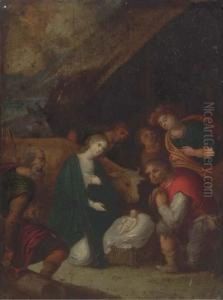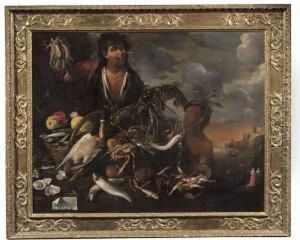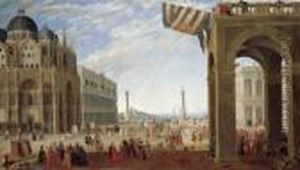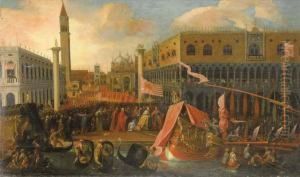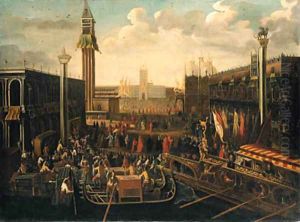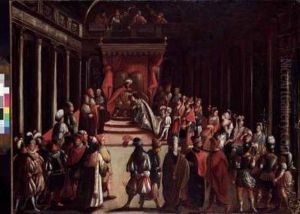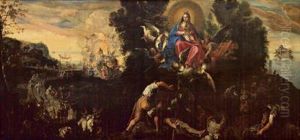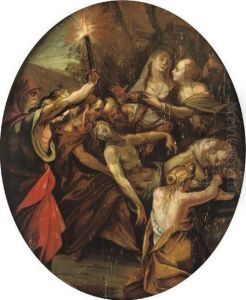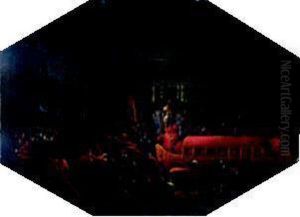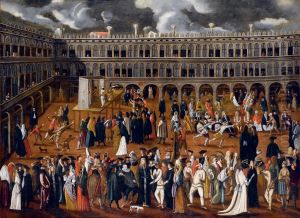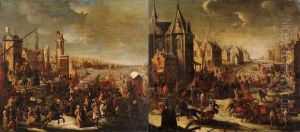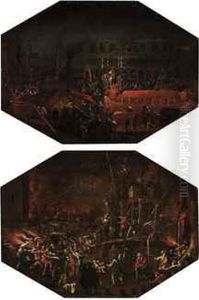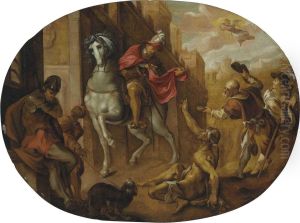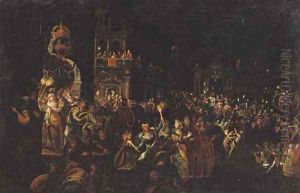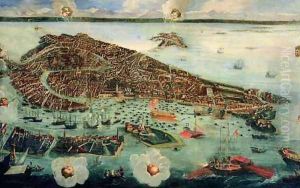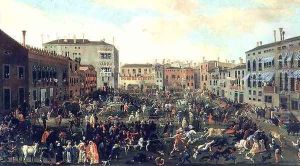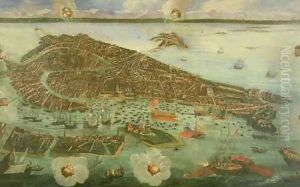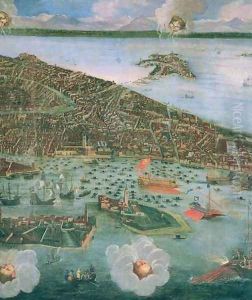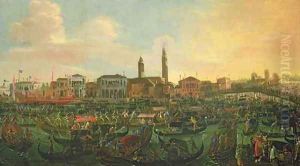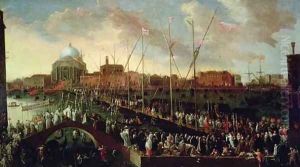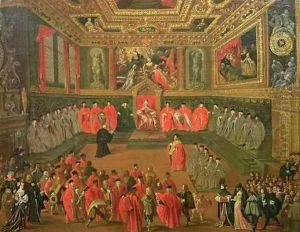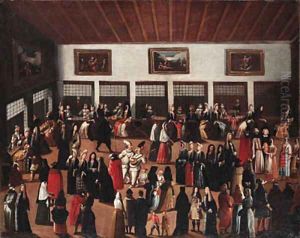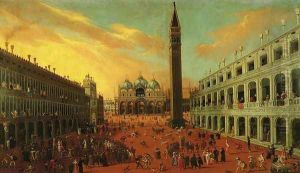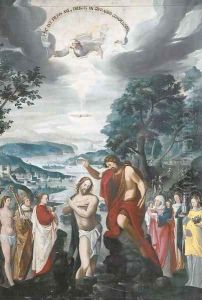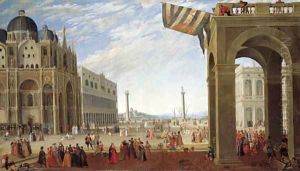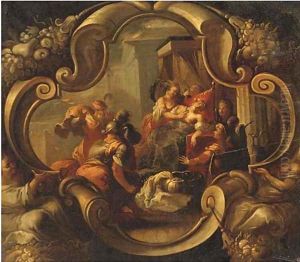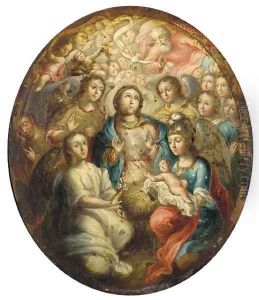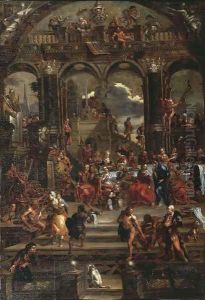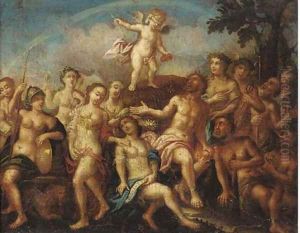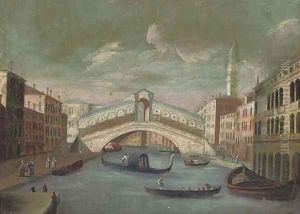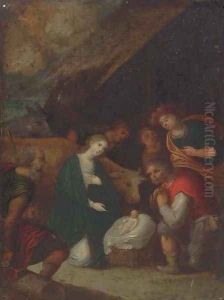Joseph, The Younger Heintz Paintings
Joseph Heintz the Younger was a Swiss Baroque painter, draughtsman and architect who was born in Augsburg, Germany in 1600. He was the son of Joseph Heintz the Elder, who was also a notable painter of the late Renaissance period. The younger Heintz was known to have been active in Rome, Venice, and in various cities across Germany where he worked for a number of princely and noble patrons.
In his early years, Heintz followed in his father's footsteps, receiving his initial artistic training from him. His father's influence is evident in his early works, which exhibit a strong Mannerist style with complex compositions and a vivid use of color. After his father's death in 1609, Heintz the Younger continued to develop his skills, potentially traveling to Italy to study the works of the masters.
While Heintz's early works were primarily paintings, he later became known as well for his work as an architect and designer. His architectural designs included plans for gardens, fountains, and palatial residences, showcasing a versatility that was highly valued in the Baroque era.
Joseph Heintz the Younger had a successful career and his works were sought after for their elegance and detail. He was adept at painting religious and mythological scenes, portraits, and landscapes. His work is characterized by a harmonious blend of the Northern Renaissance attention to detail and the dynamism of the Italian Baroque.
Heintz the Younger's work was influential in spreading Baroque ideas in Northern Europe, particularly in Germany and Switzerland. He was not only an artist but also an important figure in the cultural circles of his time, interacting with other artists, intellectuals, and patrons.
Joseph Heintz the Younger died in Augsburg in 1678. His legacy lived on through his art, which continued to be appreciated for its contribution to the Baroque movement. Today, his works can be found in various museums and collections, serving as a testament to his skill and creativity as both an artist and architect.
